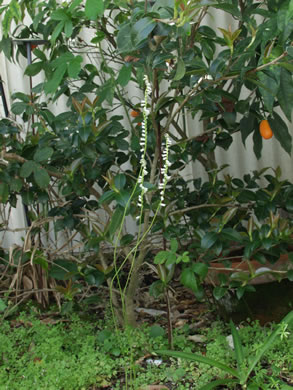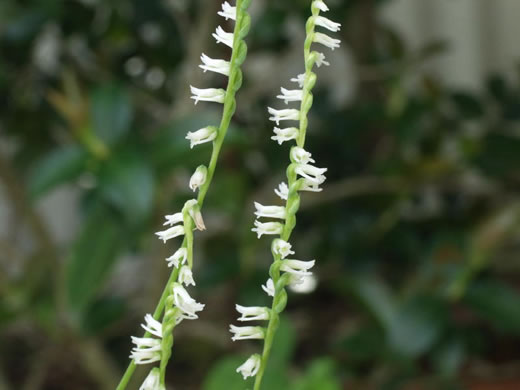Spermatophytes (seed plants): Angiosperms (flowering plants): Monocots: Asparagales
WEAKLEY'S FLORA OF THE SOUTHEASTERN US (4/24/22):
Spiranthes eatonii
FAMILY
Orchidaceae
Go to FSUS key
Dig deeper at SERNEC, a consortium of southeastern herbaria.
Learn more about Spiranthes from the Vascular Plants of North Carolina.
Apparently previously confused with S. lacera, S. floridana, S. brevilabris, and S. tuberosa, but distinctive in the combination of spring blooming season, white flowers, and basal, narrowly oblanceolate leaves (Brown 1999), per Weakley's Flora (2022)
SYNONYMOUS WITH
PLANTS NATIONAL DATABASE:
Spiranthes eatonii
FAMILY
Orchidaceae
SYNONYMOUS WITH Floristic Synthesis of North America. BONAP (Kartesz, 2021)
Spiranthes lacera var. eatonii
SYNONYMOUS WITH Flora of North America north of Mexico, vol. 26 (2002)
Spiranthes eatonii
COMMON NAME:
Eaton's Ladies'-tresses
To see larger pictures, click or hover over the thumbnails.
Jim Fowler jafspi_eat
April Levy County FL
The tiny flowers are only 1/6" long, bright white with a green spot on lip, per Wild Orchids of South Carolina: A Popular Natural History (Fowler, 2005).
WEAKLEY'S FLORA OF THE SOUTHEASTERN US (4/24/22):
Spiranthes eatonii
FAMILY
Orchidaceae
SYNONYMOUS WITH
PLANTS NATIONAL DATABASE:
Spiranthes eatonii
FAMILY
Orchidaceae
SYNONYMOUS WITH
Floristic Synthesis of North America. BONAP (Kartesz, 2021)
Spiranthes lacera var. eatonii
SYNONYMOUS WITH
Flora of North America north of Mexico, vol. 26
Spiranthes eatonii
If a search such as "Carex leptalea var. leptalea" doesn't deliver the results you want, try "Carex leptalea".
Or, to minimize chances of a misspelling, try just "Carex le".
Less is more: If "pencil flower" doesn't deliver the results you want, try "pencil".



